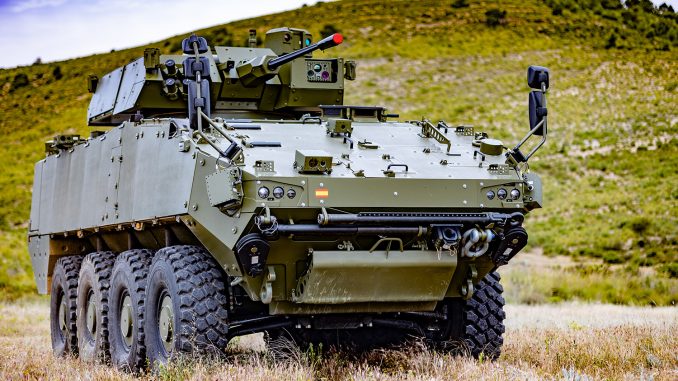
By now, all our readers know what the concept of “predictive maintenance” encompasses and what advantages it offers over traditional or reactive maintenance. The Spanish company EM&E (Escribano Mechanical & Engineering) intends to go one step further with its weapons stations, adding to this embedded learning and supervision, which will allow those in charge of carrying out first and second echelon maintenance and repairs. can carry out tasks until now reserved for the upper echelons. A project initiated after a proposal from the MALE (Army Logistics Support Command) and whose success will be key for the future Technical Life Cycle Support Office (OTACV) of the VCR 8×8 Program.
During the Cold War, the presence of tens of thousands of Warsaw Pact tanks was one of the main threats that NATO member states had to face. The same could be said of the Eastern air forces and their navies, given the huge numbers of platforms they kept in service. To counter these threats, and knowing that it was impossible to match the Soviets and their allies in quantity, technology was chosen as a way to overcome an overwhelming numerical inferiority. In that way, The designs of armored vehicles (and other platforms, weapons and weapon systems) became increasingly sophisticated, incorporating better directions of fire, higher power engines, complex transmissions and a large number of electronic equipment.
Maintain a smaller number of platforms in service - without trying to ignore the advantages that the technologies born at the mercy of the Second Compensation Strategy provided– always entailed lower resistance to attrition. In other words, in the event of a confrontation, each casualty, whether it was a loss in combat or a breakdown that could not be resolved on the ground, would be felt much more in the Western ranks than in the Soviet ones.
predictive maintenance, as we explained a few months ago, arises from the need to maintain high operability in media that, due to their cost and relatively small number, were not - and are not - dispensable. Unlike the Soviets, for whom aviation engines or the propellers of their battle tanks were something to be mass produced and, if necessary, to replace the first of the exchange in the context of a large-scale war, in which had guaranteed numerical superiority, in the West things were very different. With combat tanks and armored vehicles whose cost increased exponentially as each new generation incorporated more and more increasingly complex systems and components, each loss was a significant loss. and in some cases, irreplaceable, regardless of whether it had occurred due to a mechanical failure or reach.
This was clearly demonstrated on several occasions, such as in Iraq on March 19, 2003. Then, operating from the Saudi base in Arar, a column of 718M vehicles Pinzgauer He went deep into the Middle Eastern country with the mission of creating chaos behind enemy lines. In command was Lieutenant Colonel Pete Blaber, who by the way we talked about in the article about the Operation Anaconda. Blaber and his men, after traveling six hundred kilometers, had to take control of the Haditha Dam - about 300 kilometers west of Baghdad - to prevent the Iraqis from destroying it and flooding the routes approaching the Iraqi capital from the south, which was the axis of the main American advance.
Having taken the objective with the help of the 75th Ranger Regiment, they had to proceed to the second part of the mission, which consisted of simulating an allied offensive from the western flank that would create confusion among the Iraqi commanders. To give credibility to the attack, on March 24, the H1 air base was captured intact and a dozen M1s were transported Abrams Books on several C-17As Globemaster modified for USSOCOM. Advancing with hardly any logistical support, in less than two weeks of fighting more than half of the M1 Abrams Books They were inoperative, most due to breakdowns, except for one that overturned in a ditch and had to be abandoned (after self-destruction to avoid falling into enemy hands). That is to say, in 15 days of operations, and without having suffered a single casualty due to the impact of a grenade or an enemy missile, the unit had lost half of its troops, similarly reducing its combat capacity.
Of course, this is just one example among thousands possible. In any case, it is very illustrative and should make us think about what would happen in longer operations and to an army that did not have the means of the American one, since if the latter has always stood out for something, it has been for its logistical capacity and its high proportion between the number of uniformed personnel in the rear and those assigned to the front.
To this we must add a second factor and that is that the complexity of current weapons systems multiplies the number of possible errors, especially those that have to do with non-mechanical components, such as software or electronics. In this sense, a vehicle like the future VCR 8×8 Dragon It could become unusable for combat not only because the engine or gearbox blows out, or because several tires get flat, because its main weapon gets jammed or anything else we can imagine. It could also become inoperative if the battlefield management software, or the software that controls the weapons station, "hangs" for whatever reason or if any of the many processors they incorporate melt down.
Logically, the greater the number of subsystems, the greater the chances that something like this will happen, and that neither the crew nor the maintenance teams closest to the front will be able to do anything to solve it. At least not without being able to access expert knowledge on site and without having all the documentation and instructions necessary to carry out their task, no matter how complex it may be, in any place and under any conditions.
Rafael López Mercado said in his article dedicated to predictive maintenance that "in the United States, thanks to a mentality open to change, which makes them capable of assimilating the lessons learned and implementing the solutions discovered, the implementation of predictive maintenance was promoted from all branches of its military forces." This is, neither more nor less, the task that lies ahead of our Army. Some steps have already begun to be taken and will be important for “Force 35.” Others will be more difficult to implement, but that does not mean we can shy away from the challenge they pose.
In the case we are discussing today, involving EM&E weapons stations, like the Guardian 30 that we have already talked about, intend to go one step beyond predictive maintenance, something fully assimilated from the early design stages and for which they have integrated numerous sensors in their towers. Its idea is to host the necessary technical documentation in the cloud, to combine predictive maintenance and interactive learning with augmented reality, to make use of Big Data and, in short, to find a way to ensure that, whatever happens, its towers continue to function. Let's see how.
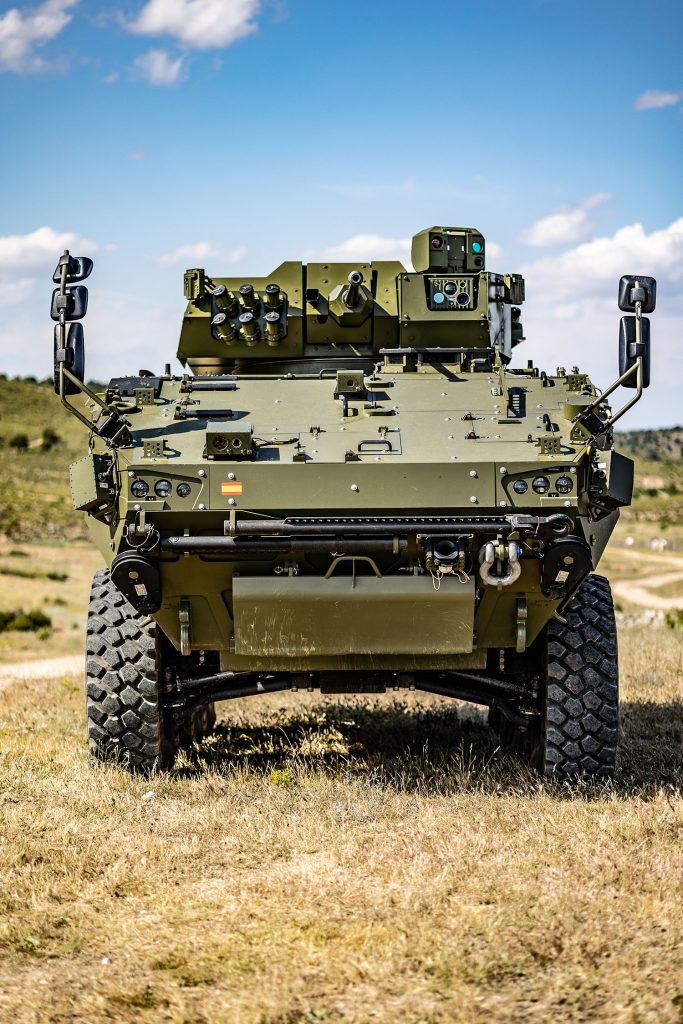
Interactive learning and predictive maintenance in the civil world
One of the characteristics of the times we are living in is that unlike other times in the past, the civil industry is ahead of the military industry in many aspects. There are many companies that have been implementing augmented reality and interactive learning systems in which, through the use of VR glasses and QR codes or natural identification systems that detect the user's hands and the shapes of what is in front of them, they make possible to train your operators.
In the best of cases, these systems allow the trainee, by himself, to explore the parts of the system on which he must be instructed, to be able to move them in virtually all directions, to access technical documentation, etc. Logically, while the training process is underway, all this is done under human supervision, since it is always necessary to have the advice or guidelines of someone who knows the system in depth. Now, given the possibility of viewing in real time on another screen the same thing that the VR glasses show to the student's eyes, nothing requires the expert to be physically in the place where the course is taught.
This system has its advantages, especially in a globalized and interconnected world in which, to cite an example, there are very few countries that produce advanced machine tools. Let's imagine the case of a Spanish, Japanese or German company that has managed to export a state-of-the-art milling system to the United States. This system, installed in a factory in Missouri, and as the reader will understand, is all the more profitable the longer it is in operation. If in the event of a breakdown the production company is forced to transfer personnel there (something that is not unreasonable at all, rather it is quite common), it will be days in the best of cases until it can return to operation.
The options in these cases have always been limited. One, very basic and in demand, involves installing a subsidiary in the country to which the machines are exported, guaranteeing 24/7 maintenance. Now, this is an expensive solution that not only reduces the profit margin of the exporting company, but also often causes problems by depending more on subcontractors than on technicians actually coming from the parent company, since the latter can rarely do without its staff to send it to other latitudes, much less attend to several incidents at the same time, in teams spread across several countries. The solution is to train the operators of these machines in their maintenance through interactive learning, reducing to a minimum the occasions in which it is really necessary to transfer own personnel.
Of course, none of this implies that local personnel will be able to undertake each and every possible repair. Not even all the maintenance tasks that complex systems such as those described require. However, it is possible to solve a large number of incidents, especially if at the disposal of the operator in the field we have an engineer from the manufacturing company who, via telematics, can supervise the actions to be taken, make recommendations, guide the process, resolve doubts, setbacks, etc. It could be argued that this way of operating is nothing more than a trick by the manufacturers to save costs, but the truth is that it is a system that works, increasingly in demand and that meets the ultimate objective: keeping these machines running the entire time. as much time as possible.
Moving from the civilian to the military world, we can see that there are hardly any differences between the machines that we have used as examples (milling machines, cutters, 3D printers, large lathes, stamping machines, presses...) and modern weapons systems. If, returning to the case of the VCR 8×8 Dragon, we look at the whole, we will see that it has multiple subsystems, each of which can fail, causing the vehicle to lose its combat capacity or it to be degraded. Thus, if the optronic systems fail, if the motor says enough or if the tower ring gets stuck or the electric motor that moves it breaks down, we will find ourselves with a weapons system that is as expensive as it is useless, since it could not fight with guarantees. .
Since the conditions in which it must serve, both in maneuvers and once in the theater of operations, are particularly demanding, we continually risk failures of all kinds. This makes them excessively dependent on the available maintenance capabilities, especially those of the first and second echelon, which are those that allow a system to be returned to combat in the shortest time. Now, this is not always easy, since at these levels there is rarely the means or knowledge necessary for certain tasks. This is where both interactive learning and predictive maintenance come into play.
Predictive maintenance can be summarized, very simply, in the ability to carry out the correction or replacement tasks necessary for the proper functioning of a system before failure occurs. In a way, every time we take the car to the shop, replace the oil or change the filters, we are doing this same thing. Now, in scenarios where the stakes are not a call for a tow truck or a failed vacation due to a mechanical breakdown, something more is needed. This is where predictive maintenance comes into play, as it allows us to know the status of multiple components in real time, making it possible to advance repair or replacement operations so that mechanical failure never occurs or, at least, is minimized. the chances of this happening.
If we think about complex platforms, such as a supertanker or a container ship, we will see that the personnel on board is much smaller than what would a priori be expected, given the displacement of these vessels. If a monster like the "Emma Maersk", with a length of almost 400 meters can be handled by just over a dozen people, it is not thanks to magic, but to extreme automation and predictive maintenance. This makes it possible for most of the ship's systems to be sending data about their status 24 hours a day, so that a person can monitor and take the necessary preventive measures before they break down. Also because over the years, thanks to the experience acquired and a better understanding of the enormous amounts of data collected by multiple sensors installed in a large fleet like the one managed by this company, they know with certainty what the failure alerts are. of each component and is much more exquisite with maintenance tasks. The same applies to truck fleets or airplane fleets. Transport companies, with dozens and even hundreds of vehicles in their inventory, need to minimize the number of incidents, which is why they have developed extensive experience in the use of predictive maintenance systems.
If we think about it, the problems they must face are not too different from those faced by an Army like the Spanish one, with an armored fleet that numbers in the hundreds of vehicles. Without going any further, in the case of the future VCR 8×8 Dragon we are talking about 348 units only in the first phase, to be built by the TESS Defense consortium, made up of Santa Bárbara Sistemas, Indra, SAPA Placencia and Escribano Mechanical & Engineering.
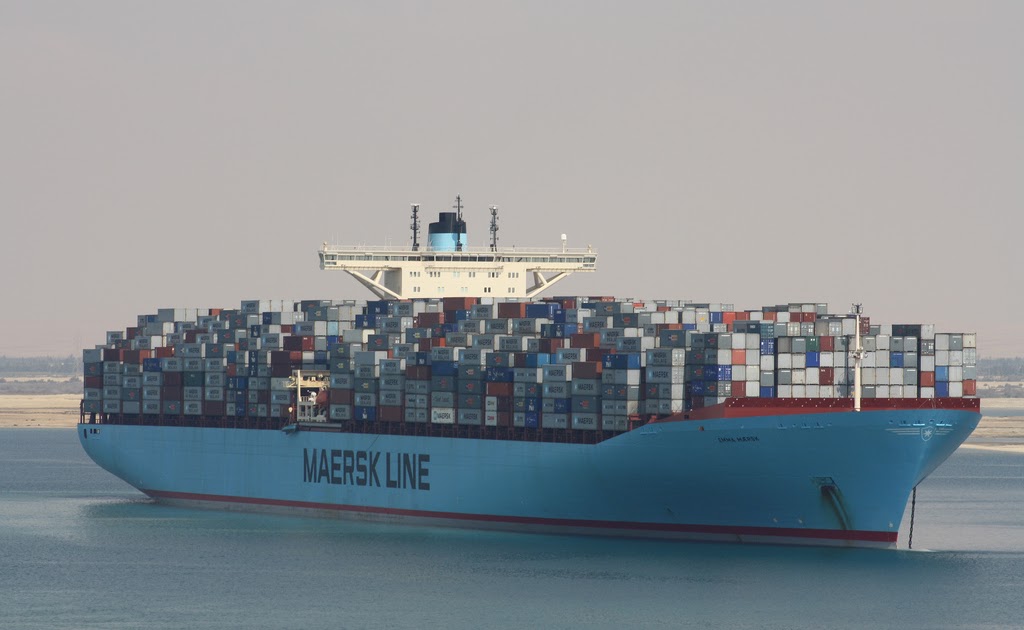
Predictive maintenance and the Guardian 30
At the end of the previous section we made reference to the VCR 8×8 Dragon program of the Army. As we know, said vehicle will mount - in the absence of resolution of the appeal presented by Pap Tecnos - Escribano's Guardian 30 towers. With this in mind, the General Directorate of Armaments and Materials (DGAM), responsible for a program that if completed will be valued at almost 4.000 billion euros, has begun working on the life cycle of future vehicles, including the turrets. To this end, it is considering creating a Technical Life Cycle Support Office (OTACV), equipped with the necessary personnel and means to ensure operational availability and that maintenance costs throughout the life cycle do not exceed forecasts. As explained by Infodefensa:
«The office would work in four major areas: maintenance engineering, updates and modifications, advanced sustainment and spare parts management and materials logistics. Their tasks would be very diverse: operational availability; adjustment, calibration and alignment of equipment; support to logistical bodies; equipment maintenance; predictive maintenance management; fault investigation and fault identification; control and management of technical documentation; configuration control; obsolescence management; exploitation of the digital twin; management of modifications and actions in equipment and systems; retrofit management; supply of spare parts and components; and management of training activities.
Achieving all of this exceeds the capabilities of MALE or the DGAM and will be impossible without the involvement of the companies that form the consortium in charge of the production of the new vehicles, as well as the weapons and other systems installed in them. In the specific case of EM&E, the task is to implement that predictive maintenance and that interactive learning that we have talked about previously and, in the opinion of its engineers, to combine them to achieve a whole that is much more useful for the Army's objectives. To do this, it will be essential to delve into a series of lines of work, such as:
- Improve data analysis capabilities: to create a knowledge base on which to base predictive maintenance. As we have said, when the towers come into service, we will be talking about hundreds of units, each with multiple sensors and all of them transmitting in real time. Powerful analysis tools will be needed to extract the truly useful information from such a tangle of data.
- Implement augmented reality systems: so that the tower can show the user precise data in real time about the state or functionality of the system, putting synthetic information before what the eye sees thanks to the use of augmented reality glasses such as Google Lens. This, which sounds a bit cryptic, means that the company must create a solid, intuitive and functional interface that makes it possible for the data that the system produces to be transformed into useful information for the maintenance operator, for the engineer in charge and even for the crew if they have to intervene on the fly.
- Virtualize systems (digital twin): The products will have an embedded simulator that will allow an immersive reality experience, reproducing the physical environment and creating the necessary situational awareness so that the person in charge of supervising the system has virtual access to all the elements that compose it and can not only evaluate them, but also manage them from a distance.
From the combination of these three lines of work they hope that an integrated maintenance and learning system will emerge that presents, at least on paper, multiple advantages over the forms of work currently in use.
For example, the system must be able to indicate to the echelons when and how maintenance operations should be carried out through a check list that allows establishing a unique work methodology. What is better, in the event that for whatever reasons this changes (for example after a new analysis of the data sent by the sensors installed on the towers), said task list would be updated in real time in the cloud, becoming available for all units and echelons involved.
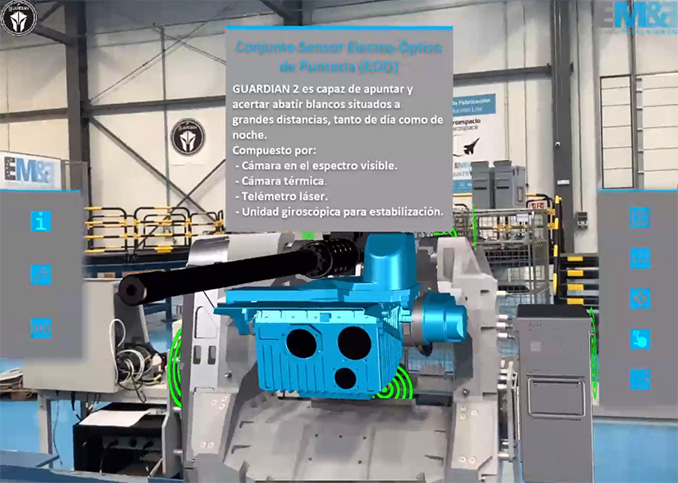
This last aspect, that of the cloud, is crucial, since what will ultimately make it possible for the model in which EM&E works to be implemented is the rapid development that information and communication technologies have experienced in recent years. years and the emphasis that the Armed Forces are placing on adapting to this phenomenon. It will be thanks to the improvements in communication that operators will be able to receive advice from experts from the company itself if they need it. Also, when the time comes, this same expert can take control of the system from a distance, carrying out as many operations as he deems necessary and accessing all the relevant information for maintenance or repair. As the company explains, in certain cases "it is better for one of our engineers to be able to see the system through their own eyes, even from a distance, than through the eyes or impressions of others."
Now, this dependence on communications and the ability to access the cloud It is also an Achilles heel. Not only is bandwidth limited - and will be - but systems can go down, communications infrastructures, including satellites, they can be attacked, etc. The company knows this and plans to have backup systems that allow operators to access information even in environments where communications have been degraded.
Beyond the bottleneck that communications always represent, there are many other complications that EM&E is trying to overcome by investing in R&D&i. The company has been sensorizing its products for years, something that in cases like that of the Guardian 30 has been taken to a paroxysm, including multiple systems capable of measuring each relevant data. What is more important, since the first phase of the design they have been collecting data about the main parameters that influence operation (CPU, GPU, humidity, clearances, deviations, vibrations, temperatures of use...). Thanks to the analysis of the data collected, they have been able to create a series of constantly updated databases, which will allow better knowledge of the needs of each weapons station on a day-to-day basis and optimal maintenance planning. All in all, it is a work that will still require years to offer its best results.
For some of the stations that the company produces and that have been exported in significant quantities, they already have sufficiently precise data about performance and reliability or to organize maintenance with all guarantees. In the case of those delivered, for example, to the Spanish Navy (34 towers so far) or to that of Peru, this process is still underway. Regarding the Guardian 30, although in these years of design and testing have been able to collect a significant volume of information, it will be when they go into mass production and begin to be installed on the VCR 8×8 Dragon barges, when they will be able to have all the pertinent data.
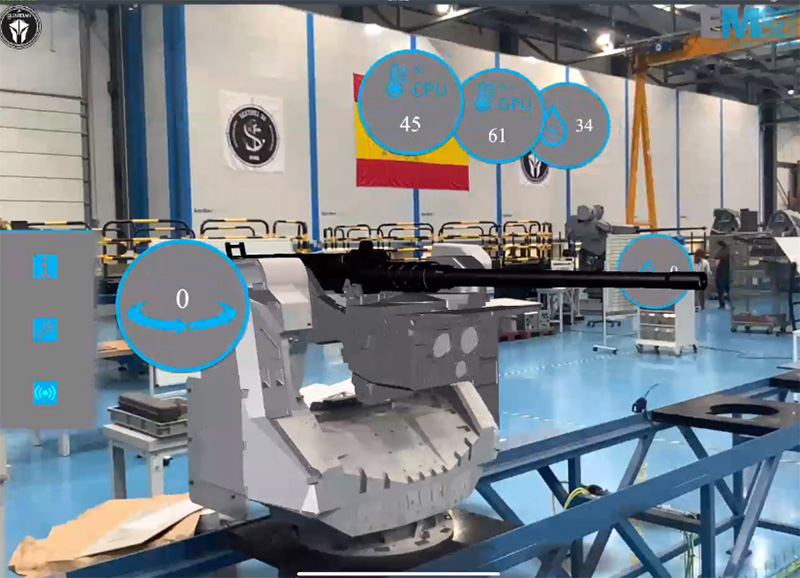
Given the number of sensors per tower, the number of towers that will be produced and the multiple scenarios in which they will have to operate, as time goes by, the precision of the analyzes will become increasingly greater, which will positively affect the life cycle of the weapons stations themselves. However, this will force both the company and the Life Cycle Support Technical Office to work hard on the development of Big Data necessary to deal with gigabytes and gigabytes of information and separating, as they say, the wheat from the chaff.
Having all the data mentioned and being able to analyze it is an immense advantage, but it is of no use if on the other side of the screen the personnel in charge of maintenance do not have adequate training or do not have the resources to carry out their work. That is why beyond predictive maintenance, the company considers interactive learning and the use of online resources to be essential. Thus, the operation manuals will be included in the same systems, in addition to the traditional paper format. The company claims not to believe in them, even though they recognize their importance and the need for the end user to know them in depth. They maintain that through simulation and augmented reality, which allow the user to learn how to use the system without the need for manuals, better results will be obtained.
This way of proceeding, in which the manuals and all the technical information are completely digitized and are stored in the cloud - with backup in the physical memory that the weapons stations themselves include in case communications fail -, makes it possible for the files They can be constantly updated, but also that the user can access them in any situation not only for consultation, but as a form of interactive support. In fact, the challenge is not so much to codify maintenance guidelines on paper, but rather to create the necessary tutorials and aids so that any operator, with very little or no specific training on the system in question, can undertake multiple tasks.
By the way, and although we are paying practically all our attention to hardware, the same can be applied to software, which is increasingly important for the operation of modern weapons systems. The system allows us to know how many cycles an interruption has occurred in a program and to act accordingly for the future.
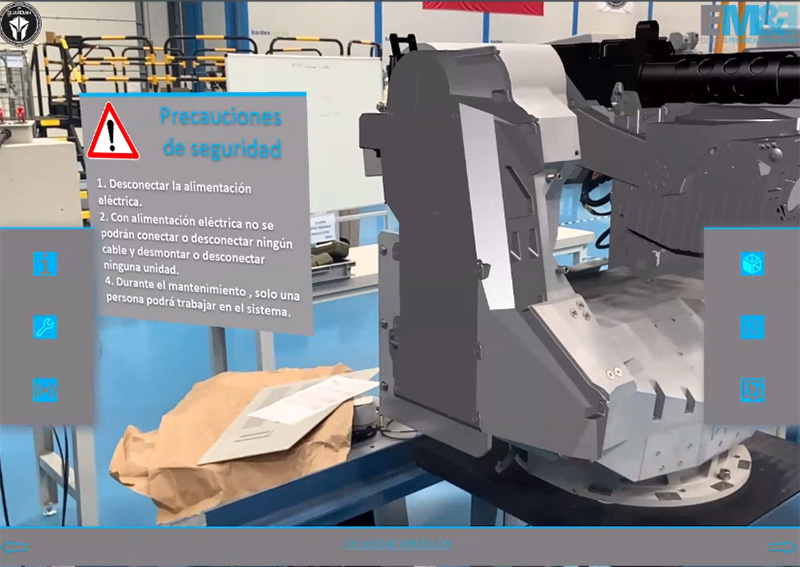
We had the opportunity to see the system in operation with the company's Technology Director, José Carlos Hidalgo, and to verify, as shown in the images, that at all times he guided the user through each step to follow. Furthermore, at the same time, the user can consult not only the real-time data collected by the sensors, but also the characteristics of each component. Now, the work ahead, until each maintenance operation has its own PDF tutorial, with explanatory videos, etc., is enormous. In fact, it will take years and a lot of money to carry out this, although the company is determined to do it at all costs.
In Hidalgo's opinion, there is also an important psychological aspect that maximizes the advantages of this new way of carrying out maintenance: it causes those in charge of carrying it out to become even more interested in their work. It may seem like a trivial issue, but the truth is that being able to "play" with virtual components, having all the information at hand and converting otherwise routine operations into something more fun and interesting, has its advantages and helps to involve staff in pursuit of a common objective: to offer the best possible maintenance.
Last but not least, we must once again emphasize the concept of industrial and technological sovereignty, which will never be such if foreign companies have to be used to provide life cycle support. In this sense, the fact that both the barge, the tower and the multiple subsystems (combat, optronics, communications...) are Spanish allows total freedom and independence also in relation to maintenance, something that would not be possible in the same way if resorted to foreign companies, even though the well-known industrial compensations were negotiated and all the ends were left tied on paper. In other words, the fact that the technologist is Spanish allows the end user to carry out any maintenance operation without limitations. Unfortunately, otherwise we have plenty of examples in the FAS.
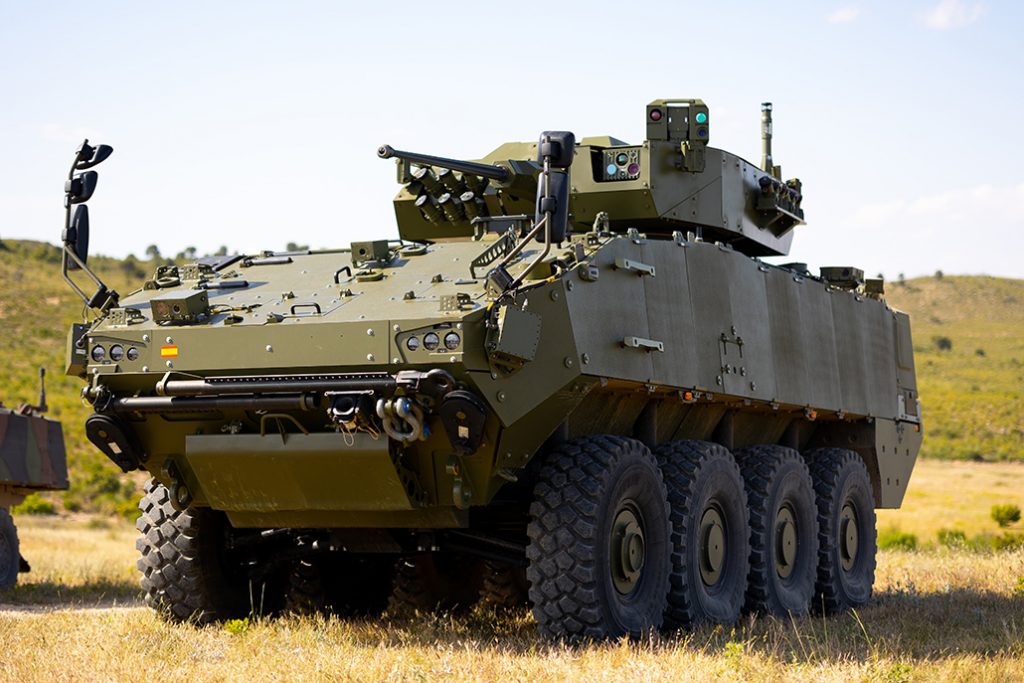
Conclusions
The Spanish Armed Forces have long opted for quality over quantity. In the case of the Army and programs such as the VCR 8×8 Dragon, this bet will be taken to the limit, since these are much more complex systems than those they must replace, which will necessarily limit the number of them. in service. In this context, the need to keep each of them in a position to operate regardless of the circumstances is an imperative. The only possible path is to combine predictive maintenance with profound changes regarding the training and support received by those in charge of carrying out these important tasks. This implies betting on augmented reality, simulation, the cloud and the analysis of large volumes of data.
At Escribano they openly acknowledge that they are not pioneers in any of these technologies, but rather draw on the experience achieved by many other companies over the last two decades. Now, they believe that they are capable of combining them and developing solutions that offer significant added value so that, in relation to their weapons stations and especially the VCR 8×8 program, they will be able to significantly improve life cycle support.
It will not be easy, since achieving the goal they have set involves sensorizing each product, including natural or artificial brands that allow showing data sheets, informative videos or manuals, prepare these contents by personalizing the information offered so that it adapts to the exact needs of the end user, simulate each maintenance operation of each part, design secure systems that allow the information to be stored both in the cloud and in the own weapons stations, coordinate with the manufacturers of the barges and each of the other subsystems that make up such a complex vehicle, etc. In short, a major challenge that they face with a view to being able to do two things: 1) Minimize the possibilities that their weapons stations may fail and; 2) If necessary, that the crews or second echelons have at their disposal all the necessary resources and support to solve almost any problem on site. Only in this way will they be able to guarantee maximum availability for their products and thereby ensure that combat capabilities always remain high.
Beyond what this project means for the Madrid company, it is evident that for it to come to fruition it will also depend on the commitment of other actors. Without going any further, the Army itself will have to adapt to a new way of working, a process that always encounters resistance within any organization, but which is essential if what is intended is to get the best out of new vehicles. which are very far from being simple mechanical assemblies.
For now, the company has already shown its project at the Toledo Forum, which MALE was hosting. In the coming months and years they will continue working, as they consider that it is a differentiating element compared to the competition and they trust that the possibility of offering better support to the life cycle of their products will end up tipping the balance in future contests. If they fulfill everything promised, we have no doubt that they will.

Be the first to comment